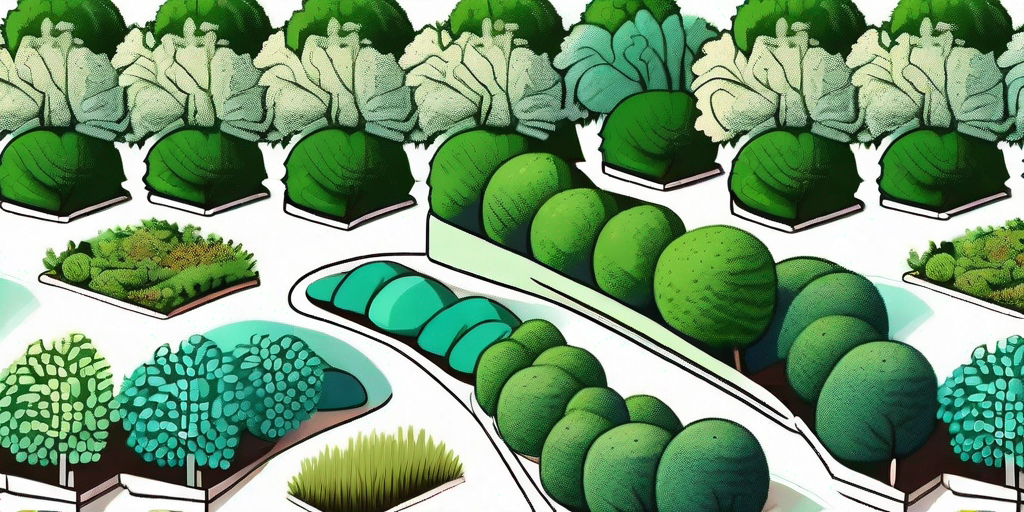
Welcome, green-thumbed readers! If you're here, you're probably the proud owner of some boxwoods, or you're planning to be. Either way, you're in the right place. This guide will take you on a journey through the world of boxwood fertilization, a thrilling ride filled with nutrients, soil testing, and yes, even a little bit of poop. So, buckle up and let's dive in.
Understanding Your Boxwoods
Before we start talking about feeding your boxwoods, it's crucial to understand what they are and what they need. Boxwoods are hardy shrubs that are often used for hedges or borders. They're like the bouncers of the plant world, keeping everything in line and looking sharp.
Boxwoods are pretty low-maintenance, but they do have some specific needs. They like well-drained soil and a good amount of sunlight, but they're not big fans of harsh winter winds. So, if you live in the Arctic, you might want to reconsider your landscaping choices.
The Importance of pH
One of the most important things to consider when feeding your boxwoods is the pH of your soil. Boxwoods prefer slightly acidic soil, with a pH between 6.0 and 7.0. If you're not a soil scientist, don't worry. You can easily test your soil's pH with a kit from your local garden store.
If your soil is too alkaline, your boxwoods may start to look a little yellow and sad. But don't despair! This is easily fixed with some sulfur or iron supplements. If your soil is too acidic, a little bit of lime should do the trick.
Choosing the Right Fertilizer
Now, let's get to the good stuff: fertilizer. Choosing the right fertilizer for your boxwoods can feel like trying to find the perfect pair of jeans. It's a bit overwhelming, and there's a lot of options, but once you find the right one, it's a game-changer.
Boxwoods need a balanced fertilizer, which means it has equal amounts of nitrogen, phosphorus, and potassium. These are the three main nutrients that plants need to grow and thrive. You might see fertilizers labeled with three numbers, like 10-10-10. This means it contains 10% nitrogen, 10% phosphorus, and 10% potassium. Easy peasy, right?
Organic vs. Synthetic Fertilizers
When it comes to choosing a fertilizer, you have two main options: organic or synthetic. Organic fertilizers are made from natural materials, like compost or manure. Synthetic fertilizers are made in a lab and contain specific amounts of nutrients.
Organic fertilizers are a great option if you're looking for a slow-release solution. They break down over time, providing a steady supply of nutrients to your boxwoods. Synthetic fertilizers, on the other hand, are fast-acting and can be easily controlled. However, they can also burn your plants if used improperly, so be sure to follow the instructions on the package.
How to Feed Your Boxwoods
Alright, you've got your boxwoods, you've got your fertilizer, now what? It's time to feed those hungry shrubs! Feeding your boxwoods isn't a complicated process, but there are a few things to keep in mind.
First, you'll want to apply your fertilizer in the early spring, just as your boxwoods are starting to grow. This will give them a nice boost of nutrients to kickstart their growth. You can also apply a second round of fertilizer in the fall to prepare them for the winter.
Application Techniques
When it comes to applying your fertilizer, you have a few options. You can sprinkle it around the base of your boxwoods, making sure to keep it off the leaves. Or, you can mix it into the top layer of soil. Either way, be sure to water your boxwoods thoroughly after applying the fertilizer to help it soak in.
How much fertilizer should you use? That depends on the size of your boxwoods and the type of fertilizer you're using. As a general rule, you'll want to use about 1 cup of fertilizer for every foot of plant height. But always check the instructions on your fertilizer package to be sure.
Common Boxwood Fertilization Questions
Can I use coffee grounds as a fertilizer?
Yes, you can! Coffee grounds are a great source of nitrogen, and they can help to acidify your soil. Just be sure to compost them first, or they can mold.
What if my boxwoods are yellowing?
Yellowing boxwoods could be a sign of a nutrient deficiency, often iron. Try adding a fertilizer with a higher iron content, or using an iron supplement.
Can I over-fertilize my boxwoods?
Yes, over-fertilizing can be just as harmful as under-fertilizing. Too much fertilizer can burn your boxwoods and cause nutrient imbalances. Always follow the instructions on your fertilizer package to avoid overdoing it.
Conclusion
Feeding your boxwoods might seem like a daunting task, but with a little knowledge and the right tools, it can be as easy as pie. Remember to test your soil, choose the right fertilizer, and apply it at the right time. Your boxwoods will thank you with lush, healthy growth and stunning greenery. So go forth, fellow gardeners, and feed your boxwoods to perfection!















